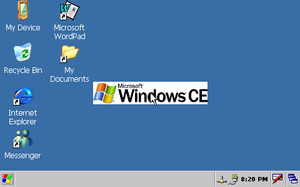Pocket Excel Download Windows Ce 50
Jun 16, 2016 The Windows Mobile 5.0 SDK for Pocket PC extends Visual Studio 2005 so that you can write managed and native application software targeting Windows Mobile 5.0 based Pocket PC devices. Ubratj okno master aktivacii microsoft office 2016.
I am developing a Smart Device Application in Microsoft Visual Studio 2005 that will run on a Symbol Handheld Device (Model: MC50). I was wondering if anybody knows the class or reference or toolbox control.NET uses to handle barcode scans. I am unable to determine the barcode scan event. I want to be able to scan a barcode capture the value, manipulate the value in the application, display the scanned value, and then write the value to a internal table.
Any help or suggestions would be greatly appreciated. For my applications, I have created a 'Proxy' control that will try to detect the device the application is installed on.
This 'Proxy' control will fire its own event when a scan takes place. By using this proxy, you can code your application to one interface, then let the proxy worry about the device specifics.
As you add new hardware, you don't need to putz around with the business logic. If the users of your application are going to depend on having the scanner read a barcode, then I would try to avoid any 'Wedge' software simply because you can not be sure the device will always have the wedge loaded. In the case of the Symbol (now Motorola) 9090x, the wedge is a bit flakey. One thing to consider is device portability. I also develop for Symbol devices but I try to support a variety of manufacturers. There are two main ways to do this: - Download all of the supported manufacturer's SDKs and use conditional compilation to enable the particular library. The downside to this is that some manufacturers may not be taken into account.

You will need to create a generic/no-SDK build also to support manufacturers for which you do not have the SDK, or for the case where they run the app on a device without a scanner. - Have the scanner enabled external to your application via a wedge. For example, there is a little program called scanwedge.exe for Symbol devices that simply enables the scanner. Then when your app runs, any scans are simply typed into the focused control. Scanning and keyboard entry would look the same from your app's point of view. There are also open source wedges out there. For Symbol devices I generally use the second method because it is easier to develop.
Then just use scanwedge. For my applications, I have created a 'Proxy' control that will try to detect the device the application is installed on. This 'Proxy' control will fire its own event when a scan takes place. By using this proxy, you can code your application to one interface, then let the proxy worry about the device specifics. As you add new hardware, you don't need to putz around with the business logic. If the users of your application are going to depend on having the scanner read a barcode, then I would try to avoid any 'Wedge' software simply because you can not be sure the device will always have the wedge loaded. In the case of the Symbol (now Motorola) 9090x, the wedge is a bit flakey.